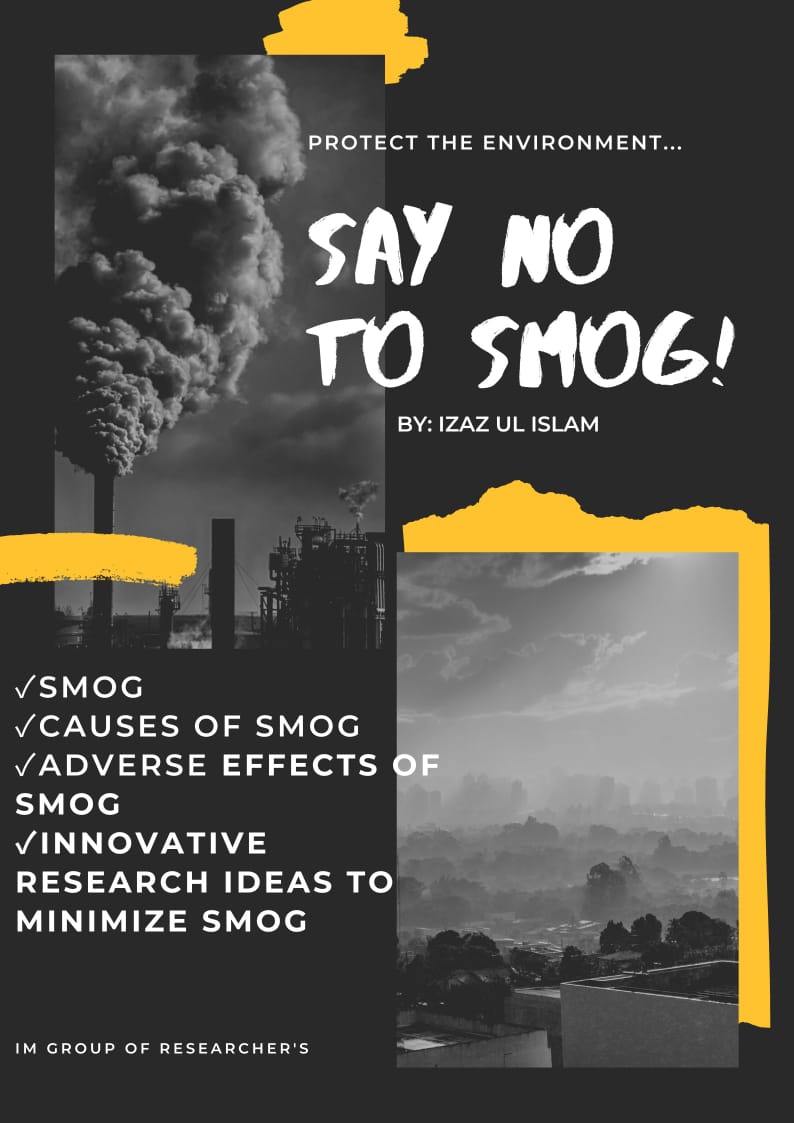Say No to Smog! Causes of Smog & how to minimize it.
Smog is a type of air pollution that results from the combination of smoke and fog. It is often seen as a hazy, yellowish, or grayish mixture of air pollutants. Smog can have severe adverse effects on both the environment and human health. This article is all about “Say No to Smog! Causes of Smog & how to minimize it”.
Author
Izaz Ul Islam

LinkedIn: Click here to see Izaz’s profile
Causes of Smog:
1. Ground-Level Ozone (O3)
Oxides of Nitrogen (NOx) and Volatile Organic Compounds (VOCs), released from vehicle emissions, industrial processes, and natural sources, react in the presence of sunlight to form ground-level ozone.
2. Particulate Matter (PM):
Emissions from vehicles, industrial processes, and construction activities release fine particulate matter into the atmosphere. These particles can contribute to smog formation.
3. Industrial and Residential Emissions:
Emissions from factories, power plants, and residential heating systems release pollutants, including sulfur dioxide (SO2) and nitrogen oxides, which can contribute to smog.
4. Geographical and Meteorological Factors:
Geography, temperature inversions, and stagnant weather conditions can trap pollutants close to the ground, exacerbating smog formation.
Adverse Effects of Smog on Humans:
1. Respiratory Problems: Smog can irritate the respiratory system, leading to symptoms such as coughing, throat irritation, and shortness of breath. It can worsen pre-existing conditions like asthma and bronchitis.
2. Cardiovascular Issues: Prolonged exposure to smog is linked to heart problems, including increased risk of heart attacks and stroke.
3. Reduced Lung Function: Children exposed to smog may experience reduced lung development, potentially affecting their long-term health.
4. Premature Death: Long-term exposure to smog is associated with an increased risk of premature death, particularly in vulnerable populations.
5. Economic Impact: Smog-related health issues lead to increased healthcare costs and decreased productivity.
Innovative Research Ideas to Minimize Smog:
1. Clean Energy Sources:
Research and development of cleaner energy sources such as renewable energy and advanced nuclear technologies to reduce reliance on fossil fuels.
2. Advanced Emission Control Technologies:
Develop more effective emissions control technologies for vehicles, industries, and power plants to reduce NOx, VOCs, and particulate matter emissions.
3. Urban Planning and Transportation:
Study urban planning strategies that promote public transportation, carpooling, and the use of electric vehicles to reduce traffic-related emissions.
4. Air Quality Monitoring and Forecasting:
Improve air quality monitoring and forecasting systems using advanced sensors and data analytics to provide early warnings and help people avoid high smog areas.
5. Vegetation and Green Spaces:
Research on the role of urban green spaces and vegetation in mitigating smog by absorbing pollutants and improving air quality.
6. Public Awareness and Education:
Investigate effective ways to raise public awareness about smog, its health impacts, and ways to reduce individual contributions to smog formation.
7. Policy and Regulation Analysis:
Assess the effectiveness of air quality regulations and policies in different regions and propose evidence-based policy improvements.
8. Technological Innovations:
Explore emerging technologies like air purifiers, personal air quality monitors, and pollution-capturing materials that can help individuals reduce exposure to smog.
Research in these areas can contribute to the development of effective strategies for reducing smog and its harmful effects on both human health and the environment. Collaboration between scientists, policymakers, and the public is essential in addressing this complex problem.
Also read: Difference Between Research Paper & Review Paper
Follow Us on

